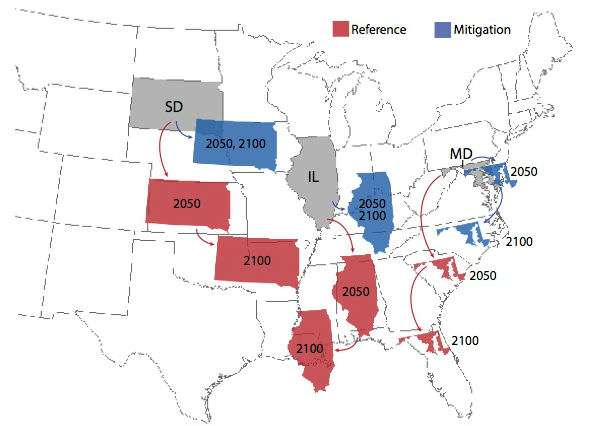Environmental Protection Agency
EPA Map Shows in 2100 Illinois Will Be as Hot as Louisiana; Maryland as Steamy as Florida
If the world doesn't cut back on greenhouse gas emissions

Earlier today I blogged about the new Environmental Protection Agency report Clmate Change in the United States: Benefits of Global Action, that looks at the economic effects of keeping global average temperature below an increase of 2 degrees Celsius above the pre-industrial average. I noted that the increase in projected costs would amount to about 1.6 percent of the U.S. GDP in 2100.
To illustrate how the EPA thinks U.S. climate will change, the agency includes a nifty map showing projected changes in the in summertime temperatures for selected states with and without global GHG mitigation.
From the report:
The map compares mean summertime (June, July, and August) temperature in South Dakota, Illinois, and Maryland in 2050 and 2100 under the Reference and Mitigation scenarios to states with similar present-day temperatures. For example, the projected mean summertime temperature in Illinois in 2100 under the Reference scenario (83°F) is projected to be analogous to the mean summertime temperature in Louisiana from 1980-2009 (81°F). In other words, without global GHG mitigation, Illinois summers by 2100 are projected to "feel like" present-day Louisiana summers. The maps are not perfect representations of projected climate, as other factors such as humidity are not included, but they do provide a way of visualizing the magnitude of possible changes in the summertime conditions of the future.

So if the world does not cut back significantly on greenhouse gas emissions, the EPA projects that by 2100 South Dakotans will suffer through Arkansas weather; Chicagoans endure Jackson, Mississippi temperatures, and Marylanders will no longer have to be snowbirds.


Show Comments (175)